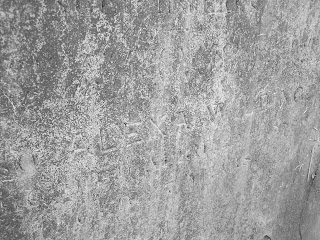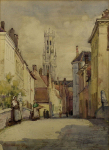Mr Walker does not do scary movies. He may well be the cream of manhood, but in the face of a film with spooks and chills he tactfully withdraws. Therefore Miss Holman and I found ourselves at the cinema without a gentlemanly escourt, to see
The Woman in Black. Oh deary me, I think I may have lost a few years of life, due in no small part to the enthusiastically screaming teenagers in the audience, but in between the jumps and bumps, the bit with the rocking chair, oh, and this bit...
Oh, for the love of God. Anyway, inbetween the very effective scares I got to thinking about the Victorians and ghosts and how representative
The Woman in Black is of Victorian culture.
As I said in the last post, there is nothing I love more than a modern interpretation of Victorian culture. I love it so much I'm having a go at it myself. I remember the first time I read
The Woman in Black by Susan Hill, and I couldn't believe how scared it made me. I think it was the first and possibly the last time I have been utterly terrified while reading. Ironically, the passage that scared the pants off me was not in the film (The bit with the dog in the fog), but that small, moving passage was so powerful that I had completely forgotten great big bits of the plot and denied they were in the book. Thinking about it, despite the child murdering, insane, revenge spirit doing her worst against Harry Potter, possibly what happens to the dog in the fog is too much for audiences.
For the Victorians, the ghost was a complicated symbol. They searched for them desperately, but feared them utterly.
 |
| The Apparition John Everett Millais |
For the most part, the Victorian obsession with ghosts is entirely linked to the obsession with guilt. The Victorians knew the choices they made were complicated and motivated by contradictory aspirations. The ghost in Millais'
The Apparition confronts a man who looks terrified. She is dressed as a bride and the vapour trail behind her forms her train. She reveals herself between the bed curtains and he reaches towards her. He does not recoil or flinch, and that is the key to the image. What did this man do to the bride that makes him reach towards her? She seems to confront him, but he seems to already know his guilt and he wants her forgiveness. I wonder at the piece of paper on the floor and the smoking candle, and my wild assmption is that consumed by guilt, our chap is in the midst of committing suicide (hence the note) and as his life ebbs away (the guttering candle) he sees the woman he abandoned on their wedding day (leading to her death, probably in a gutter or the snow, as per normal).
 |
| The Ghost John Everett Millais |
Just to even the score, Millais does a 'woman regretting her choice' wedding picture, with her ghostly groom looking both sad and disappointed at his feckless bride. Shame on you, Miss! For many people, the choice of marriage partner was crucial for advancement, that marrying for love, if that meant starving, did not mean being a good Victorian. If you go around marrying nice poor men, how are you going to get a new bonnet, or that aspidistra you so desperately need for your what-not? Choke back the guilt and get on with it! Hang on, I feel a bit of Shakespeare coming on...
 |
| The Ghost of Banquo Theodore Chasseriau |
In the novel
The Woman in Black, Arthur Kipps goes off to Eel Marsh House in an attempt to further his career, newly married with a young son. His ambition makes him continue to plow into danger, not respect the doom that has settled on the village. It is his Victorian ambition to better himself and his family that causes him to fall very foul of the mystical forces at work in the tiny village. Although it is a little extreme, Macbeth is just an ambitious chap who lets his pesky conscience derail him. Oh, and all that murdering, that didn't help.
 |
| The Party on the Stairs Adelaide Claxton |
Every building I have worked in so far has been 'haunted', once by a previous member of staff which is somewhat disconcerted. I have even worked in a portacabin which had the ghosts of dead miners roaming it (or stationery cupboard was never warm), but I do have a healthy scepticism about ghosts, despite seeing a woman who was there one minute and gone the next. The little girl on the stairs sees a party of Georgian ladies and gentlemen, walking through her house, laughing and joking. Unlike Millais' spectres, these ghosts have no interest, or acknowledgement of the 'modern' world. They are echoes of a previous time, happy times in the house, not out for revenge or even notice. Possibly the reason that this aspect of haunting is fairly rare is because it is without purpose. The little girl has done nothing to deserve a visitation from the dead, and they are not exactly visiting her. The dead have no interest in her, they are just passing through, just echoing back.
 |
| The Ghost Story Frederick Smallfield |
The ghosts that visited Ebenezer Scrooge weren't just passing through, they were there to show him that he was on the brink of losing his humanity. For the most part, the visitation of ghosts seemed to indicate that you had gone astray in someway and the best you could hope for was a pointer in the right direction rather than a horrific reminder of the worst decision of your life. Maybe the reason that ghost stories were (and are) so popular was because the reader could get a vicarious thrill from the punishment of others and at the same time double-check their own sins.
 |
| Study for The Haunted House Alfred Munnings |
Back to
The Woman in Black, and there is definitely a sniff of modern Japanese horror about it. Without giving too much away for those who have not read the book or seen the film, it is quite un-Victorian in that the ghost that Arthur Kipps encounters is not specifically for him, he has nothing to atone for but has just stumbled into a pre-exisiting situation. Blimey, that sounds a bit clinical. Arthur ends up being collatoral damage who has to atone for another person's sins, which is unfair and not very Victorian at all. He wants to do his best, he shows respect and cares about the past events, but still has to pay the price (the dog in the fog!). That's not the way it works, not in Victorian England, that's not how Victorian-karma goes!
 |
| Father and Son with the spirit of the departed wife and mother |
When Rossetti's interest in her began to wane, Fanny Cornforth became a medium to enable him to contact Lizzie Siddal, and herein lies a giant, unspoken aspect of Victorian ghost culture. If ghosts are portents of doom, vengeful spirits here to bring down your past mistakes upon your head, why did people seek them out at seances? Why do we hunt for them now, entire programmes on satellite telly dedicated to seeking them out? Maybe part of it is that life is short. Life can be brutally short and what becomes of all that love and care we pour into others when they cease to be? It's not only the belief that our sins will find us out, but a hope that our love will find us too. The Father and Son in the picture above obviously felt that the deceased woman was still with them, literally 'in spirit', all that love they had shared had not just vanished, had not just amounted to nothing.
Although we live longer than our ancestors (and definitely longer than most people in
The Woman in Black) there is still the fear of how brief our lives can be, and what is the point in investing your
everything in someone only to have them leave you. How comforting to think that they remain, unseen but not uncared for.
Go and see
The Woman in Black, but go during the day and make sure your screen is packed with screaming teenagers. Really, it releases the tension, and all I have to say is that I will never look at a rocking chair in the same way ever again....



















































